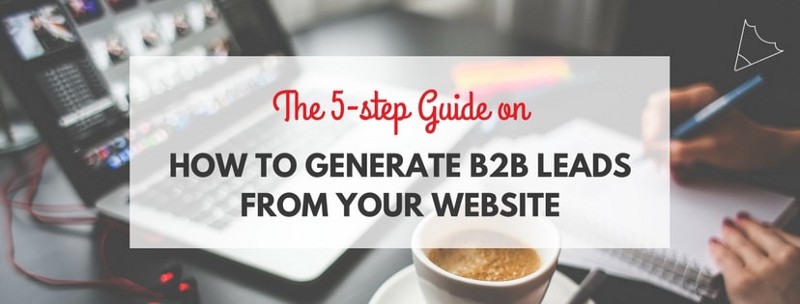
How well is your website doing for you in terms of sales?
In other words,
Is your website making you money or did it just cost you money to build one?
If your answer to these questions is negative, don’t worry. You’re not alone.
In fact, there are thousands of B2B companies who are trying to generate quality leads from their website.
As per a recent survey conducted among B2B marketers:
“The #1 challenge for B2B companies is generating high quality leads.”
All of these corporations have hit a plateau before even starting the uphill journey.
That’s because they don’t know the right approach, the actionable strategy nor the initial steps.
But one thing is for sure – everyone loves leads.
With a drastic shift in the way consumers absorb content, it’s getting even more difficult to attract leads using traditional means such as billboards, TV & print ads, exhibitions etc.
And since B2B lead generation can be a little overwhelming, I’ll tell you everything you need to do on your website in order to transform it into a lead-generating machine.
Step 1: Optimize your Website for Search Engines.
Stop right here, and open your website in a new tab.
Now ask yourself these 4 questions:
- Are your customers able to find you online?
- Is your website Google-friendly?
- When somebody lands on your website, is there a clear “value path” for the visitor to be guided from one page to the other, until they’ve found exactly what they were looking for?
- Have you used the right keywords on your website?
(These keywords are being used by your potential leads, so you MUST structure your website based on them).
I’ve highlighted the solutions to the questions stated above in my detailed guide on website optimization.
You'll learn everything you need to know about optimizing the 12 main elements of your website.
This optimization process will help your website rank higher, get more visitors and eventually more leads.
Once you make these on-page modifications, you’ll start noticing an increase in website visitors.
And since that traffic is coming from keyword-based searches, rest assured that your website is getting popular among your target audience.
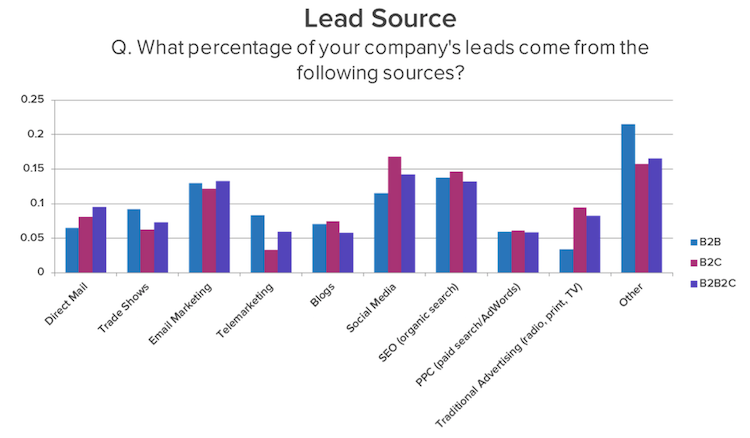
As per Hubspot’s study of the best B2B lead sources as above, having an optimized website is the biggest identifiable factor for B2B lead generation.
So, buckle up and turn your website into your biggest revenue generator.
Step 2: Invest time in creating and writing a blog
Once your website has been search engine optimized (SEO), add a blog section immediately.
This might appear as a secondary plan-of-action or something that you’ll think of doing in the long run, but the truth is – the longer you delay your blog, the longer you’ll have to wait to generate leads.
The reason I’ve placed blogging right after website optimization is because:
- Your B2B firm will be known as an expert in the industry due to the amount of content you’re publishing;
- Websites with a blog have tend to have 434% more indexed pages (source).
Indexed pages are basically the number of pages that are visited by Google bots.
The more pages your website has, the better chances of it to rank higher in search results (provided that your blog topics live in the same eco-system as that of your services)
To make this simpler, let’s take the example of a recruitment firm that’s actively seeking B2B leads.
Before they start a blog, they should create a content strategy in order to guide their blogging efforts.
This content strategy will cover all the topics related to their target audience and their business. The topics they should ideally write about would be:
Recruitment, Employee Trainings, Psychometric tests, Background checks, Employee Performance and so on.
By focusing on topics like these, the recruitment firm has established something I call “content monopoly”.
They are essentially owning the entire sphere of content and keywords, and as Google’s algorithm gets smarter, they’re more likely to emerge victorious in the search engine results page.
And remember,
B2B marketers that use blogs get 67% more leads than those that do not. (source)
As you keep publishing more blogs and expand your scope of business, you’ll end up creating more opportunities to get found on the internet.
The tricks to win at B2B blogging are:
- Develop the right target persona;
- Publish high-quality content;
- Create a stickiness factor so that people keep coming back for more; and
- Promote your blogs to gain an exponential increase in website traffic;
To get started with blogging, follow this guide by the marketing maestro, Neil Patel.
Step 3: Add Call-to-action Buttons Across the Website.
Most website make the mistake of adding only one call-to-action (CTA) button which basically shouts “contact us”. If you really want to generate leads, you’re going to have to take better care of your website visitors.
An effective CTA is the result of understanding the following elements:
- Your products or Services;
- Your Buyer Persona;
- What kind of content would they like?;
- What type of language or tone will appeal to them the most?
- Simple design guidelines and psychological effect of colors & images;
In short, here’s the structure of an effective CTA that’ll help drive more leads into your business (courtesy of Moz)
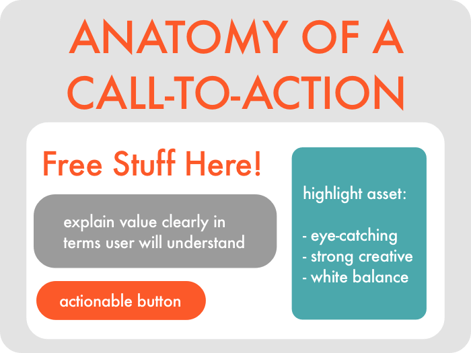
Remember that not everyone who visit your website is looking to set up a sales meeting. Maybe they’re trying to learn more about your products or services without the need to contact a salesperson.
Or, maybe they’re browsing your blog section (if you have one), or maybe they’re reviewing your pricing page.
The point is – don’t force them into a sales appointment. The internet doesn’t work that way, anymore.
In the online marketing spectrum, something known “the buyer’s journey” is critical for lead generation.
-8.jpg?width=1274&name=Webp.net-compress-image%20(1)-8.jpg)
As demonstrated in the chart above, your website visitors are in different stages of their customer journey.
They need time to review and make decisions about interacting with your company, and it’s your job to teleport them from one relevant page to the other, until they’re ready to take a desired action.
That’s why, your website should have different types of calls-to-action. This helps in guiding potential leads faster into your pipeline.
Apart from having relevant call-to-actions for each section of your website, you should also focus on the simplicity, creativity and copy of these buttons.
Your CTA buttons are the guiding light for your prospects, so make sure you’re illuminating their path aptly.
They should drive your visitors towards goals that matter to your business.
To make this happen, try using benefit-oriented copy. Here’s one example:
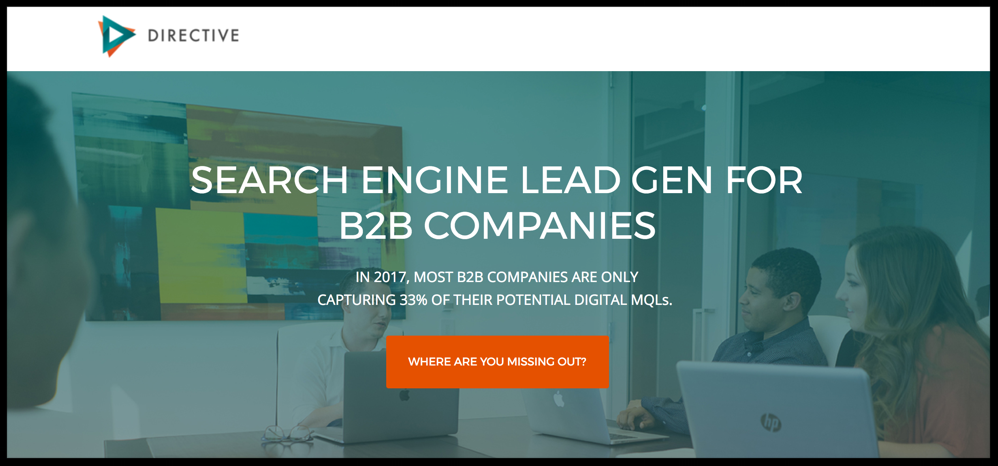
Notice how their call to action directly follows up the statement about B2B companies missing out on potential marketing-qualified leads.
Moz has compiled a list of 3 B2B case studies to prove the power of CTAs.
I am very fond of this particular CTA by Olark. It’s so minimalistic, colorful and compelling.
In just 11 words, they’ve described what they do and why users should choose them over others.
-6-736581-edited.jpg?width=1212&name=Webp.net-compress-image%20(2)-6-736581-edited.jpg)
A blue button against the white backdrop adds a little contrast to the scene and prompts the user to sign up for a 2 week trial.
Great job, Olark!
For more inspiration, check out Hubspot’s list of 31 CTA examples you can’t help but click.
Step 4: Implement the 80% - 20% rule in your content.
You cannot make your leads want what you want them to want.
Pardon me if that statement came across as a little confusing, but that’s exactly the point I’m trying to make there.
You cannot make your product or service instantly desirable to your leads.
That’s another way of saying, STOP pushing sales messages in the face of your leads.
In actionable terms, split your website content into 2 parts.
Next, evaluate the type of content you currently have.
The best practice (or rule of thumb) is:
80% of your content should be helpful and informative, while only 20% should be salesy (or promotional).
This statement may trigger a lot of salespeople who are striving to hit targets, but that’s how business is generated online.
By force-feeding sales messages to your potential leads, you’re just going to make them puke out your brand.
This is a fundamental aspect of the buyer’s journey, that we discussed earlier.
By providing adequate educational content throughout your website, you will notice an increase in conversions and lower bounce rates.
This desirable phenomena occurs because you’re helping visitors get exactly what they need while gently pushing them into the next cycle to influence their purchase decision.
So if you have a “brochure website”, ditch it immediately or risk missing out on leads you’ve always wanted to get.
The 80/20 rule goes on something like this:
- Identify your best content;
- Re-use it;
- Re-purpose it into different media types; and
- Promote it on various social media channels;
For example, add a simple explainer video instead of a painfully detailed technical guide on the first page of your website.
I understand that video can be an added cost for your business, but it offers a great return on investment.
These stats do all the talking:
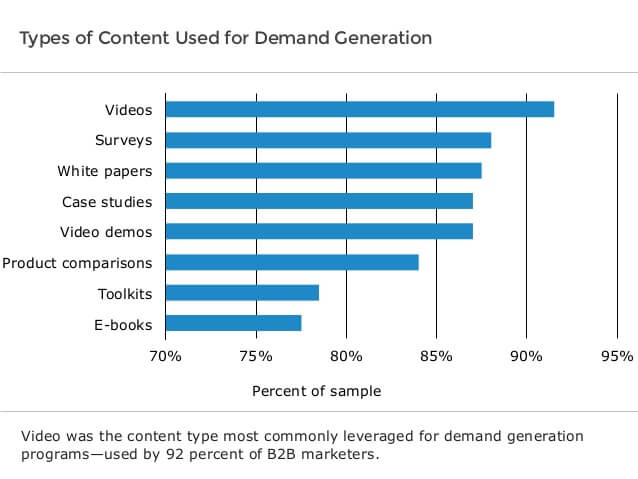
Hubspot, a leading provider of marketing and sales software, does a terrific job at content creation including videos, demos, webinar and much more.
To add the cherry on top of the cake, they even have a free academy for marketers, designers and developers to learn the methodology and the software.
Now that’s what I call the best application of the 80/20 rule.
Step 5: Add Chat tools for an immersive user experience:
Live Chat features on websites are redefining the way businesses collect & nurture leads. With an almost instantaneous response to user queries, chatting is extremely effective in collecting leads from your website.
There are 2 types of chat features for websites:
- Live Chat
- Automated Chatbots
As the name suggests, Live Chat is the ability to chat with anyone who’s on your website instantly.
With a simple line of code added on your website pages, you can activate the ability to chat directly with your potential leads as soon as they have a question.
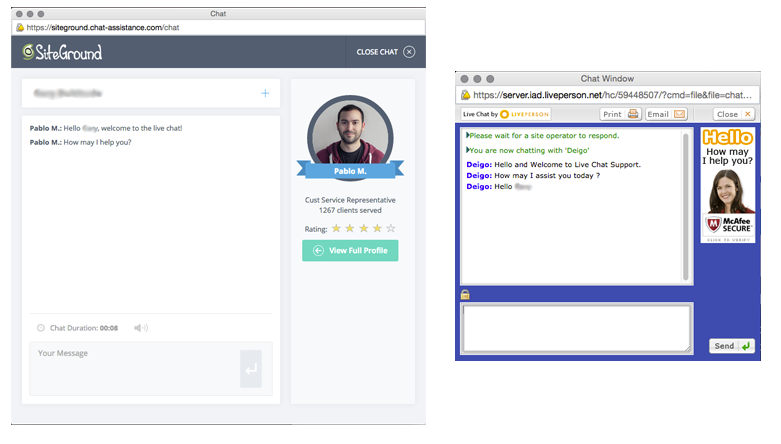
Great examples of live chat tools are:
- Hubspot;
- Zendesk,
- Olark;
- MyLiveChat;
- Tawk;
and many more.
And the best part: A lot of live chat tools out there are free to use.
To hell with budgetary excuses.
Whereas,
Automated Chatbots are intelligent chat systems that either pick up the keyword typed by a user or follow a sequence of pre-defined actions.
By identifying keywords and action triggers, chatbots seamlessly display the most relevant content to the most interested visitors.
Since you don’t have to be involved in replying queries, you can focus your time towards other managerial tasks.
Examples of chatbots:
and few others.
The illustration below quickly explains the logic behind chatbots and how they can help you generate leads from your website.
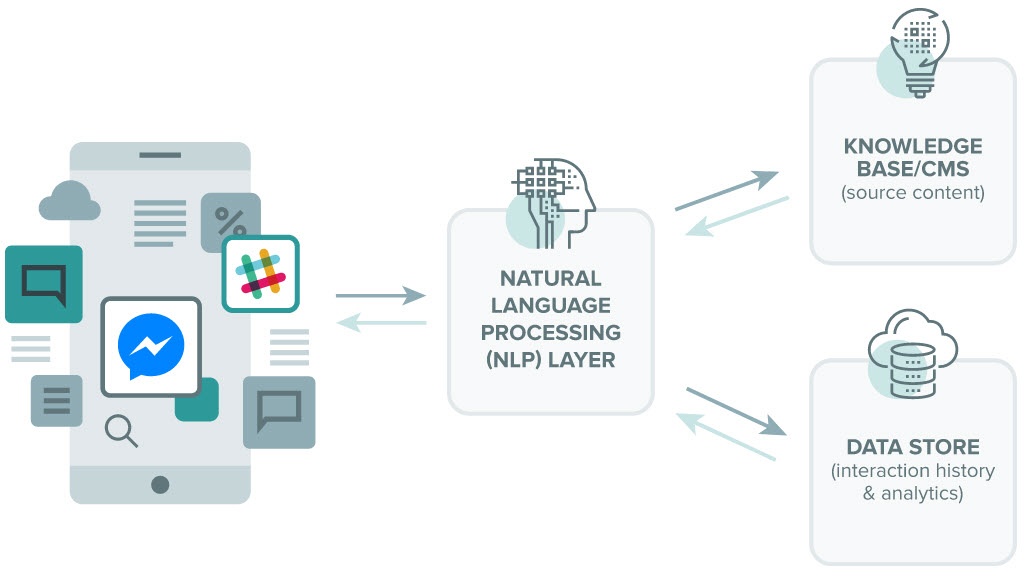
Conclusion:
Lead generation is about gaining trust, and it all begins with the user experience.
While the initial presentation (website) matters the most, you should arm your website to act more than just a product/service brochure.
Website optimization is a continuous process and you should dedicate time towards routinely maintaining it. Afterall, it's the first touch point of any potential leads for your business.




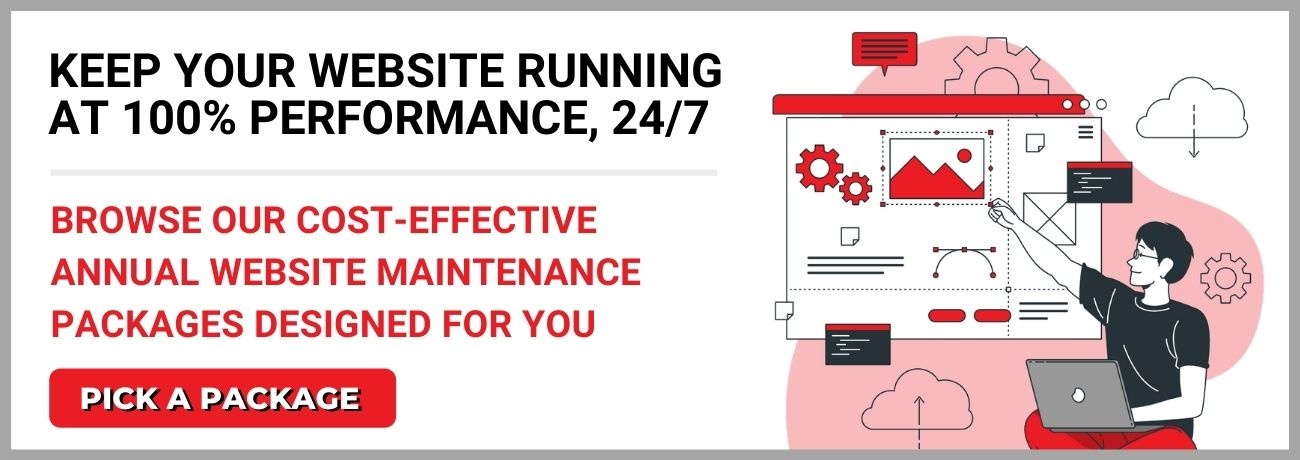
-3.jpg?width=596&name=Webp.net-compress-image%20(5)-3.jpg)

